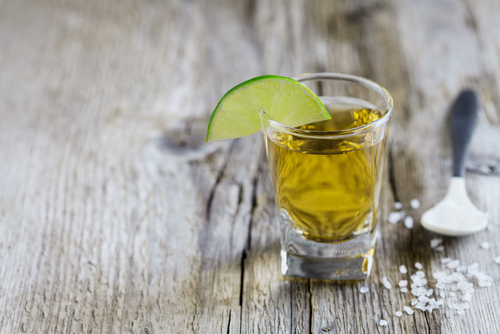The Real Tequila Story

What is “real” tequila? First what it’s not: it’s not a shot taken from a bottle with a worm in the bottom that many associate with tequila. Rather, it’s a sophisticated, traditional spirit crafted from Agave tequilana, otherwise known as Weber’s Blue Agave. Blue agave was once considered sacred by the Aztecs, and first fermented for religious ceremonies – but today, its fermentation is exclusively for the production of tequila.
Blue agave is grown only in the state of Jalisco, for the most part in an area surrounding the city of Tequila near Guadalajara. While it’s technically a type of mezcal, production is different, not only because of the limited region in which blue agave plants grow but in the careful, regulated way it’s produced, too.
First, why it is only grown in such a small region? It’s the soil. Red volcanic soil, in fact, perfect to produce blue agave. The plant can only be harvested every seven years on average. Not only is the growing process a long-term proposition, once the plant is harvested, unlike grape vines, it dies. So for every agave plant harvested, a new one must be raised and the seven-year process begins again. Farming mostly relies on manual labor, as it has for generations. Called jimadores, the harvesters must be skilled in the plant’s trimming and cultivation, as harvesting too late or early negatively impacts fermentation. In other words, farming blue agave is not for the timid.
Once the blue agave is collected, tequila is made – usually at a 40 to 50% ABV. The crafting of tequila began as early as 1600, in the first factory built in what is now Jalisco. The Cuervo family was granted the first license to make tequila commercially by Spain’s King Carlos IV, and it was first imported by the founder of Sauza Tequila, Don Cenobio. His grandson, Don Francisco Javier was the first to insist that tequila could not be made without blue agave. The result: today “real” tequila can only come from the Jalisco region.
This long tradition has led to regulation. Every tequila bottle has a serial number that tells consumers where the tequila was made. Called the Norma Oficial Mexicana, or NOM, the number signifies the tequila is produced as certified using Tequilana Weber Blue variety agave. If it doesn’t have the NOM, it isn’t “real.”
So how is real tequila distilled? After harvesting, there’s baking, shredding, mashing under a stone wheel, and then, finally, fermentation into a low-alcohol-content wort, a mixture of the ground agave plant. The wort is then distilled several more times, depending on whether the tequila being produced is ordinario or the most common clear silver-looking tequila. It may be bottled as silver, or aged in oak barrels for an amber color and more nuanced, mellow taste. The reposado is aged less than a year; the Anejo or vintage variety aged between one and three years, and the extra Anejo, first mass produced in 2006, aged at least three years.
So back to that bottle with a worm. Does real tequila ever include a real worm? The answer is no. Only mescals are ever sold with a worm. The worm is a larva from a moth that lives on the agave plant – and if found, usually means an inferior product. Unlike real tequila, mescals are not highly regulated, so finding a worm in your bottle is just not the sign of a quality drink.
And real tequila is indeed a quality drink, regulated, in great demand in the U.S. and abroad, served in upscale bars and restaurants, and today, the Jalisco region’s Tequila Trail is a major destination for tourists and tequila tasters. It doesn’t get any more real than that.
















